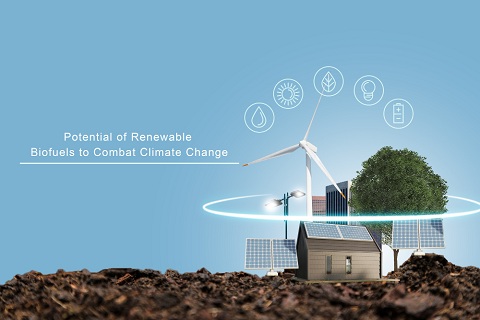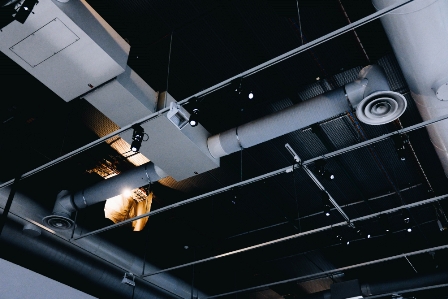In an age where environmental concerns are at the forefront of our collective consciousness, finding sustainable solutions in every aspect of our lives is crucial. When it comes to cooling our living and working spaces, traditional air conditioning systems have been energy-intensive and harmful to the environment. However, the rising demand for more eco-friendly alternatives has led to the development of innovative Green Cooling Solutions. In this article, we’ll explore a range of practices, technologies, and techniques that promote sustainable air conditioning while reducing energy consumption and minimizing environmental impact.
Air conditioning systems have come a long way since their inception, and with increasing awareness about environmental conservation, the focus has shifted towards adopting greener alternatives that provide comfort without compromising the planet. Here are some effective and eco-friendly practices for modern air conditioning:
Energy-Efficient HVAC Systems
Investing in energy-efficient Heating, Ventilation, and Air Conditioning (HVAC) systems is a significant step towards reducing your carbon footprint. These systems are designed to consume less energy while maintaining optimal indoor comfort levels. They often come with programmable thermostats and zoning options that allow you to customize cooling based on occupancy, ultimately saving energy.
Passive Cooling Techniques
Passive cooling techniques utilize natural elements to regulate indoor temperatures. Designing buildings with proper ventilation, shading, and insulation can significantly reduce the need for artificial cooling. Green roofs, reflective coatings, and strategically placed windows are some examples of passive cooling strategies that minimize energy consumption.
Solar-Powered Air Conditioning
Harnessing the power of the sun to cool your living spaces is a remarkable way to embrace eco-friendly practices. Solar-powered air conditioning systems convert solar energy into electricity to run the cooling process. This approach not only reduces electricity bills but also lowers your reliance on fossil fuels.
Geothermal Cooling Systems
Geothermal cooling systems tap into the Earth’s stable underground temperatures to provide cooling. These systems use a network of pipes filled with a heat-exchanging fluid to transfer heat from the indoors to the ground. Geothermal cooling is highly efficient, utilizing a renewable and consistent energy source.
Evaporative Cooling
Evaporative cooling is a natural process that uses water to cool the air. By passing warm air over water-saturated pads, the air is cooled through evaporation. This method is particularly effective in dry climates and consumes significantly less energy compared to traditional air conditioning.
Smart Thermostat Integration
Smart thermostats allow you to control your cooling system remotely and adjust settings based on your schedule and preferences. These devices learn your habits over time, optimizing energy usage and ensuring you only use cooling when necessary.
Ice-Powered Air Conditioning
Ice-powered air conditioning systems use excess energy during off-peak hours to freeze water, creating ice reserves. During peak hours, the air conditioning system uses these ice reserves to cool the air, reducing the load on the electricity grid and minimizing overall energy consumption.
Natural Ventilation Strategies
Utilizing natural ventilation techniques, such as cross-ventilation and stack effect, can effectively cool indoor spaces without the need for mechanical cooling systems. These methods promote the circulation of fresh air, maintaining a comfortable environment.
High-Efficiency Air Filters
Using high-efficiency air filters not only improves indoor air quality but also enhances the efficiency of your cooling system. Clean filters allow air to flow more freely, reducing the workload on the system and resulting in energy savings.
Green Building Design
Incorporating sustainable design principles into your building’s architecture can greatly influence its cooling needs. By optimizing building orientation, insulation, and material selection, you can create a naturally cooler environment that requires less active cooling.
FAQs Here are answers to some frequently asked questions about Green Cooling Solutions: Eco-Friendly Practices for Modern Air Conditioning
The main goal of Green Cooling Solutions is to provide effective and comfortable air conditioning while minimizing energy consumption and reducing environmental impact.
Yes, Green Cooling Solutions can be adapted to various climates. Different techniques and technologies can be employed based on the specific climate conditions of a region.
While some Green Cooling Solutions may have a slightly higher initial cost, they often result in long-term savings through reduced energy bills and lower maintenance expenses.
In many cases, existing air conditioning systems can be retrofitted with energy-efficient components or integrated with sustainable technologies to make them more eco-friendly.
Solar-powered air conditioning systems can still be practical in regions with limited sunlight. These systems are designed to store excess energy for use during cloudy days or nighttime.
Consulting with HVAC professionals or sustainability experts can help you assess your space’s specific requirements and recommend the most suitable Green Cooling Solution.
Conclusion
Embracing eco-friendly practices in modern air conditioning not only contributes to environmental conservation but also leads to long-term cost savings and improved indoor comfort. From energy-efficient HVAC systems to passive cooling techniques and solar-powered solutions, the options are diverse and effective. By adopting these innovative approaches, we can create a cooler world that’s both comfortable and sustainable.





